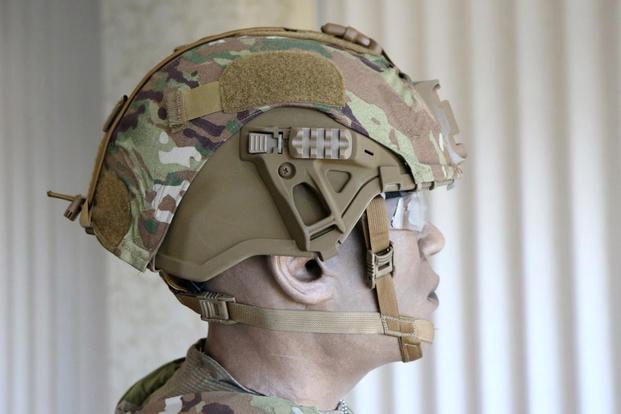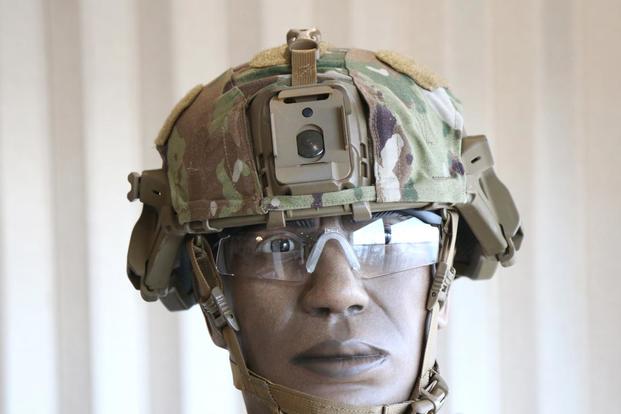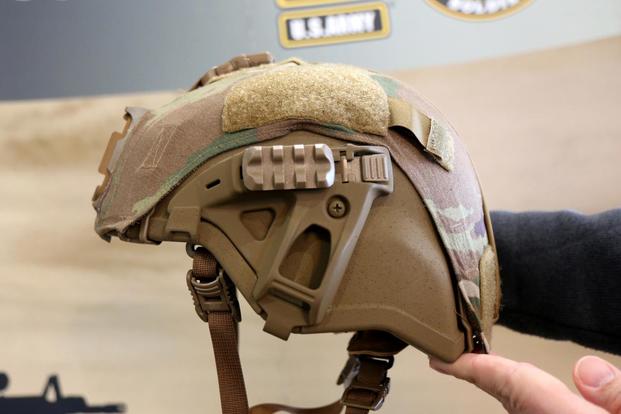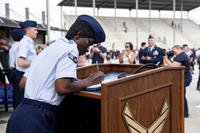U.S. Army equipment officials will soon begin fielding a new combat helmet designed to give soldiers 100 percent greater protection against blunt impact on the battlefield.
This month, soldiers from the 82nd Airborne Division at Fort Bragg, North Carolina, will receive the Army's new Integrated Head Protection System, or IHPS, which will replace the Enhanced Combat Helmet in close-combat units.
"Our next-generation helmet -- the [Integrated] Head Protection System -- it has a 100 percent greater blunt impact protection over the ... Enhanced Combat Helmet," Lt. Col. Ginger Whitehead, product manager for Soldier Protective Equipment, said recently.
Soldiers from 3rd Brigade Combat Team will receive the IHPS, along with other items in the Soldier Protection System, such as the Modular Scalable Vest and Blast Pelvic Protector, said Col. Steven Thomas, project manager for Soldier Protection and Individual Equipment.
The new helmet -- made by Ceradyne Inc., a 3M company -- offers the same ballistic protection against rifle bullets as the ECH but doubles the amount of protection against blunt impact or trauma to a soldier's head, according to Alex DeGroot, lead engineer for head protection.
"It's less force on the brain; it's a tremendous increase for us," DeGroot said. "It's actually one of the things that makes this helmet considerably better than the current [helmet]."
The new helmet also features a boltless retention system, which allowed the Army to eliminate the four holes -- two on each side -- that the chin-strap assembly normally attaches to with special bolts, Whitehead said. The new helmet still has one hole in front to attach the night-vision mount.
"The challenge with drilling holes in the helmet is that you weaken the material," she said. "With this new helmet, we have gotten rid of the four holes drilled in the side."
Each side of the helmet features removable rail sections, so soldiers can mount lights and other accessories as an alternative to night-vision devices when working in low-light conditions.
"You need the flexibility to have accessories on the helmet, particularly at night," Whitehead said.
The IHPS design provides more space inside on both sides of the head to allow soldiers to wear communications headsets more comfortably, DeGroot said.
Overall, the helmet is "actually slightly bigger than the ECH, a slightly larger amount of area coverage," DeGroot said, but added that the base version of IHPS weighs a little less than the ECH. The ECH averages about 3.33 pounds in size large.
The IHPS also features optional protective add-ons such as a visor, a "mandible" portion that protects the lower jaw, and a "ballistic applique" that is much like a protective layer that attaches over the top of the base helmet.
In addition to the IHPS, soldiers from 3rd BCT will receive the new Modular Scalable Vest and the Blast Pelvic Protector, an optional accessory that provides ballistic protection for the groin and upper thigh area.
The Modular Scalable Vest weighs approximately 11 pounds, based on a medium-size vest without ballistic plates. It weighs about 25 pounds when equipped with front and side body armor plates, which is about five pounds lighter than the current Improved Outer Tactical Vest, or IOTV.
The Soldier Protection System -- which, for now, is being fielded only to close-combat units -- also includes the new Ballistic Combat Shirt, or BCS, which has soft armor on the neck, shoulders, high chest and high back to protect against 9mm rounds and shrapnel. The BCS is designed to replace the bulkier Deltoid Axillary Protector, or DAP, which was developed early in the Iraq war to protect the shoulder and upper arm from shrapnel wounds many soldiers were receiving from enemy improvised explosive devices.
However, Bragg units will not receive the new Ballistic Combat Shirt this month because the Army does not yet have all the sizes needed for a full fielding, Whitehead said, adding that the service plans to field the new shirt later this summer.
Editor's Note: This story was updated to clarify which kinds of head injuries the helmet protects against.
-- Matthew Cox can be reached at matthew.cox@military.com.












